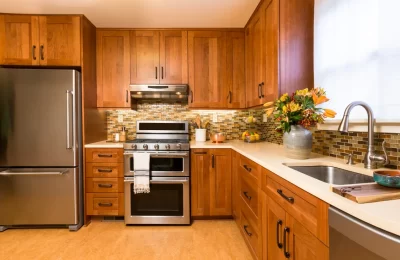
Energy-efficient homes reduce heating and cooling costs while protecting the environment by using less energy, freeing up resources, and decreasing greenhouse gasses emissions.
Green home features are not only good for the environment, they can also increase its resale value. When selecting a home inspector who understands sustainability concerns.
1. Install Energy Star-Rated Appliances
One effective way to reduce energy costs is by purchasing ENERGY STAR appliances, which use 10-50% less power than their standard counterparts.
Choose Energy Star appliances when building or renovating a home to save on utility costs in the long run. Although they might cost slightly more initially, choosing such energy-saving appliances could save money over time on utility costs.
If you need guidance to begin improving the energy efficiency of your home, a home energy assessment could provide valuable insight and recommendations for improvement. It’s worth investing in.
2. Upgrade Your Insulation
Insulation is the single most effective way to minimize energy waste and make your home comfortable throughout the year. Houses without adequate insulation can waste up to 15% of their heating and cooling funds!
Poor insulation allows heat to seep into living spaces and increase utility bills while stressing out heating and air conditioning systems. With proper insulation in place, heat remains inside during winter and outside during summer – saving both money on energy costs while contributing positively to environmental preservation.
Insulation and sealing air leaks are two cost-effective strategies to increase home energy efficiency. Upgrading insulation also brings additional advantages such as making the house quieter and helping reduce sound transmission.
3. Install A Smart Thermostat
Smart thermostats can make an incredible addition to your home’s climate controls, helping reduce energy bills by automating heating and cooling schedules to suit your lifestyle.
Many smart thermostats also provide energy reports detailing your monthly energy usage patterns. This information can help identify devices that consume “always-on” electricity consumption known as vampire loads.
If you’re in the market for a smart thermostat, ensure it fits with the existing wiring setup of your home. A C wire provides continuous power to digital thermostats; find one with one. Many smart thermostats have compatibility tools on their websites that make this process simpler.
4. Turn Off Unnecessary Devices
Unplugging devices that are no longer in use is one effective way to cut back on electricity use and save money over time. Many households have televisions in their basement or spare bedrooms which go unused, as well as chargers plugged into our laptops even when we don’t use them – all these items consume energy, contributing to costs totalling hundreds of dollars over time.
Make it a habit of unplugging everything from televisions and chargers when not in use; this will prevent phantom load which adds up to significant savings over time.
5. Install Solar Panels
Solar panels can help to lower energy costs when they produce more power than is required; any excess electricity generated can either be stored in batteries or sold back to the grid via net metering.
Energy efficient homes not only reduce utility bills but also help the environment by decreasing fossil fuel usage and greenhouse gas emissions. Furthermore, such homes typically command higher resale values.
Homebuyers today are becoming more environmentally conscious. New homes are being constructed with sustainability features in mind and existing houses may contain them too. Furthermore, mortgage lenders now offer Energy Efficient Mortgages that may save homeowners even more energy and money on utility costs.
6. Get an Energy Efficient Mortgage
Energy-efficient mortgages allow homebuyers and homeowners to include the costs associated with energy efficiency upgrades into their overall loan, thus eliminating an additional mortgage loan obligation. This option can be found across conventional, FHA and VA loans.
These mortgages typically allow projects such as spray foam insulation, ENERGY STAR appliances and low-flow water fixtures – but other projects may also qualify – so check with your lender for details.
Conventional, FHA and VA lenders allow borrowers to stretch their debt-to-income ratio by two percentage points when adding the costs associated with improvements into their mortgage loan payment, enabling them to qualify for larger properties.










